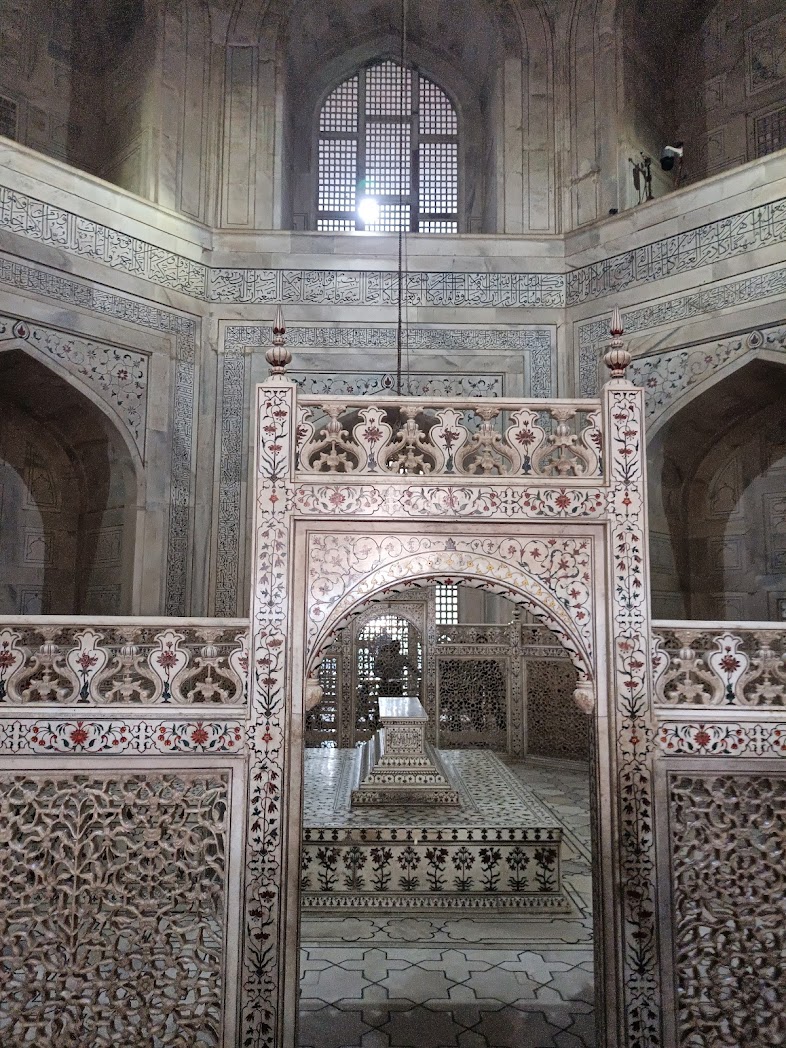
Jahanara's tomb is located in the Nizamuddin Dargah complex in Delhi, India, near the tomb of the Sufi saint Hazrat Nizamuddin Auliya, to whom she was deeply devoted. The simplicity of her tomb stands in stark contrast to the grand Mughal architecture typical of the era, reflecting her Sufi leanings and spiritual humility. Key Features of Jahanara's Tomb: Design and Aesthetics: Jahanara’s tomb is unique in its simplicity, designed in accordance with her wishes. The tomb is open to the sky (without a roof), symbolizing her desire to be "exposed to the light of heaven." The cenotaph is made of white marble and bears an inscription in Persian, which translates to: "Let nothing cover my grave but green grass, for that is the best covering of the grave of the poor in spirit." Architectural Simplicity: The tomb's minimalism is a reflection of her Sufi beliefs, which emphasized spiritual wealth over worldly riches. It contrasts with the grandeur of other Mughal tombs, such as the Taj Mahal or Humayun's Tomb, signifying her personal humility and rejection of ostentation. Location and Importance: Situated near the Nizamuddin Auliya Dargah, Jahanara’s tomb is in proximity to one of the most revered Sufi saints in India, reinforcing her deep spiritual connection. The area around her tomb is frequently visited by devotees of Sufism and history enthusiasts, making it an important site within the complex. Establishment Jahanara’s tomb was established after her death in 1681. It was built in line with her last wishes for a simple burial. The tomb was commissioned by her family and designed to reflect her spiritual disposition rather than the imperial legacy of the Mughals. Despite her high status, she chose to be remembered with modesty, aligning with the Sufi teachings that she cherished throughout her life. Jahanara’s legacy as a Mughal princess, philanthropist, and Sufi follower lives on through this understated yet significant monument, which continues to draw visitors seeking both historical insight and spiritual reflection.